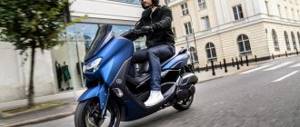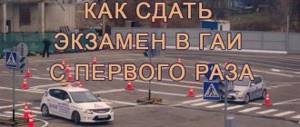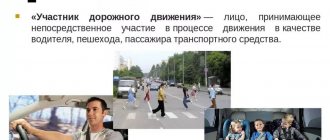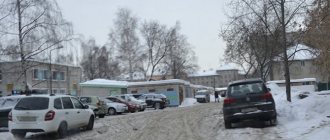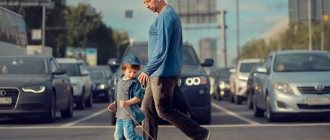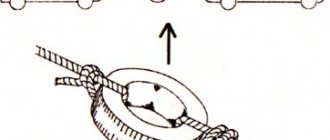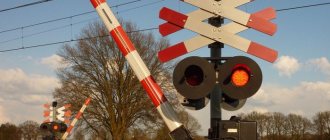What is a residential area and courtyard area?
Residential zone sign
Residential zone is an area in a populated area in which residential buildings, laundries, dry cleaners, baths, clinics, schools, places of worship, parking lots, garages and other objects associated with human habitation are located.
The boundaries of the residential area are defined by signs:
- residential zone sign 5.21 indicates the entrance to a residential zone,
- sign for residential zone 5.22 - exit from it.
Courtyard areas and extended residential settlements also belong to residential zones, and accordingly, all the rules associated with residential zones will also apply to them.
Such areas may not be residential. Entry and exit signs can be placed on specific streets or sections of them in a shopping area or even a business center, since in these places it is necessary to create suitable conditions for passers-by, limiting the speed of movement, without imposing a complete ban on vehicle traffic.
A courtyard area is an area surrounded by buildings that surrounds:
- playgrounds;
- green spaces;
- places for rest;
- local driveways to houses, schools, kindergartens, etc.
Note that the residential area and the courtyard area are not always identical concepts. The boundaries of a residential zone are delineated by road signs, and there is no definition of “yard territory” in any legislative acts at all. However, signs establishing a residential zone in cities are extremely rare, so most often such zones are understood as courtyard areas.
TRAFFIC IN RESIDENTIAL AND PEDESTRIAN AREA
⇐ PreviousPage 36 of 58Next ⇒26.1. Pedestrians are allowed to move in residential and pedestrian zones both on sidewalks and on the roadway. Pedestrians have priority over vehicles, but must not create unreasonable obstacles to their movement.
Residential areas or areas and courtyard areas are designed to provide comfortable living conditions for people, including creating conditions for children to play, recreation for the elderly, etc. Therefore, the Rules provide for a number of restrictions on the movement and parking of vehicles in a residential area. This allows, in addition to ensuring traffic safety, to improve the environmental situation in these places.
At the same time, pedestrians should not unreasonably create obstacles to the movement of vehicles (stand on the roadway of a courtyard driveway unnecessarily, thereby excluding the possibility of passage of moving vehicles, etc.).
26.2. In a residential area it is prohibited:
a) transit movement of vehicles;
The prohibitions of this paragraph, as well as all other provisions of this section of the Rules, are aimed at creating safe and comfortable conditions for the movement of citizens in residential and recreational areas in residential areas and in the courtyards of houses.
This restriction implies that vehicles have the right to enter these zones only when they serve facilities and the population, perform technological work, or belong to citizens who have come directly to this zone, and not through such a zone.
b) parking of vehicles outside specially designated areas and their location that impedes the movement of pedestrians and the passage of operational or special vehicles;
Vehicles belonging to legal entities or individuals working or located in such areas must be parked only in designated areas. If there are no such places, vehicles should be placed in such a way that they do not impede the movement of pedestrians and the passage of vehicles of operational or special services (Fig. 26.1).
Rice. 26.1. Parking of vehicles in a residential area. c) parking with the engine running;
In residential areas and courtyards, parking of vehicles with a running engine is prohibited, since noise creates unfavorable conditions for people to rest, and exhaust gases disrupt the environmental situation in places of residence.
d) training ride;
In order to ensure the safety of pedestrians, especially children, disabled people and the elderly, who in residential areas and courtyard areas have priority in traffic and have a preferential right to move along sidewalks and roadways, training driving in these areas is prohibited. This is due to the fact that the candidate driver does not yet have sufficient driving skills to prevent accidents.
d) movement of trucks, tractors, self-propelled machines and mechanisms (except for those serving facilities and citizens performing technological work or belonging to citizens who live in this zone).
Entry into residential areas and courtyard areas and movement through them for the listed categories of vehicles is permitted only in the cases specified in this subparagraph.
26.3. Entry into the pedestrian zone is permitted only to vehicles serving citizens and enterprises located in the specified zone, as well as vehicles belonging to citizens who live or work in this zone, or cars (motorized wheelchairs) marked with the identification sign “Disabled”. ", which are driven by disabled drivers. If there are other entrances to objects located in this territory, drivers must use only them.
The beginning of the pedestrian zone is indicated by sign 5.33, and its end - 5.34. Entry into it is permitted only to vehicles that serve citizens and enterprises located in the specified zone, as well as vehicles that belong to citizens living or working in this zone, or cars (motorized wheelchairs) marked with the “Disabled” identification sign that are driven disabled drivers.
26.4. When leaving residential and pedestrian areas, drivers must give way to other road users.
Since the residential zone is an adjacent territory, when leaving it, it is necessary to comply with the requirements of clause 10.2, i.e. give way to vehicles and pedestrians moving along the road, regardless of the presence of road sign 5.32 “End of residential area” and priority signs 2.1 “Give way” or 2.2 “Passing without stopping is prohibited” (Fig. 26.2).
| Rice. 26.2. Procedure for leaving the residential area. |
According to DSTU 4100-2002 “Road signs. General technical conditions. Rules of Application", courtyard areas classified in accordance with the term "residential zone" (clause 1.10 of the Rules) as residential zones may not be marked with road signs 5.31 "Residential zone" and 5.32 "End of residential zone".
27. TRAFFIC ON MOTORWAYS AND CAR ROADS
The International Convention on Road Traffic (Vienna, 1968, as amended as of 1993) established three main features that distinguish a motorway from an ordinary road. Motorway:
— has (with the exception of certain sections) independent roadways for oncoming directions, separated by a dividing strip not intended for the movement of vehicles and pedestrians;
- does not have intersections at the same level with other roads, railway or tram tracks, pedestrian or bicycle paths;
- specially designated as a highway (Fig. 27.1).
Rice. 27.1. The highway is marked using road sign 5.1.
A highway is a road, the arrangement of which makes it possible to eliminate interference in the movement of vehicles and ensure high speeds. The maximum speed at which you are allowed to drive on the highway, according to clause 12.6 “d” of the Rules, is 130 km/h.
The vehicular road is intended exclusively for the movement of cars, buses and motorcycles. Unlike a motorway, it may have properly equipped interchanges, pedestrian crossings and junctions serving adjacent areas at the same level as the carriageway of the main Road.
27.1. When entering a motorway or motorized road, drivers must give way to vehicles traveling on it.
Exits to a motorway or road for cars are indicated respectively by signs 5.1 “Motorway” (Fig. 27.2) and 5.3 “Road for cars”. This paragraph of the Rules establishes priority in the movement of vehicles moving on such roads over vehicles leaving them.
Rice. 27.2. Marking the exit to the highway with a road sign 5.1.
27.2. On motorways and roads for cars it is prohibited:
Since, according to paragraph 12.6 “d” of the Rules, higher speed limits are established on highways and roads for cars, Article 25 of the International Convention on Road Traffic, in order to ensure safety, provides for a number of restrictions on traffic on them.
a) movement of tractors, self-propelled machines and mechanisms;
It is prohibited for vehicles listed in this paragraph to enter the highway and road, since by design they can move at low speed, which will interfere with other vehicles.
b) movement of freight vehicles with a permissible maximum weight over 3.5 tons outside the first and second lanes (except for turning left or turning around on roads for cars);
If a highway or road for cars has two lanes for traffic in one direction, then the movement of these trucks is permitted in both lanes, but taking into account the requirements of paragraph 11.5 of the Rules. If there are three or more lanes for traffic in one direction, drivers of these vehicles cannot occupy the third and subsequent lanes for traffic.
c) stopping outside special parking areas indicated by road signs 5.38 or 6.15;
Intentionally stopping vehicles on the roadway or shoulder of a highway or motor vehicle road is prohibited. If there is a need for this, you should drive to a special area indicated by road signs 5.38 “Parking area” or 6.15 “Rest area”, drive off the road and stop at this area. If this is not possible, the driver of the vehicle should stop on the side of the road (to the right of the line marking the edge of the roadway), turning on the hazard warning lights and displaying a warning triangle.
d) turning around and entering technological gaps in the dividing strip;
U-turns are prohibited for cars on highways and roads, as these places are not intended for this purpose. Technological gaps are designed to allow the movement of road vehicles and mechanisms intended for repair and cleaning work, as well as for the movement of emergency services vehicles.
d) driving in reverse;
Reversing on these roads is prohibited both on the roadway and on the shoulders.
D) training ride.
In order to ensure the safety of road users, training driving on such roads is prohibited. This is due to the fact that the driver candidate does not yet have sufficient vehicle control skills to prevent accidents at higher speeds.
27.3. On highways, except in specially equipped places for this purpose, the movement of mechanical vehicles whose speed, according to their technical characteristics or their condition, is less than 40 km/h, as well as the driving and grazing of animals in the road right of way is prohibited.
To ensure safety when driving on highways, this paragraph of the Rules stipulates restrictions regarding the movement of vehicles whose speed is limited by technical characteristics to 40 km/h or their technical condition, as well as the transportation and grazing of animals. Equally, the requirements of this paragraph also apply to the prohibition of horse-drawn vehicles on such roads, regardless of whether the driver is on a horse-drawn cart or is leading an animal by the bridle. Pedestrians can stay and move in the area of special places for parking vehicles, indicated by road signs 5.38 “Parking place” and 6.15 “Rest place”.
27.4. On motorways and roads for cars, pedestrians can cross the roadway only through underground or overground pedestrian crossings.
⇐ Previous36Next ⇒
Site search:
Fine and liability
If you exceed the maximum speed in a residential area, the driver will be punished, from 500 rubles to deprivation of rights for up to 12 months. The size of the fine depends on the amount of speeding.
The remaining fines regulated by 12.28 of the Code of Administrative Offenses of the Russian Federation will be:
- 3500 rubles for Moscow and St. Petersburg,
- 1500 rubles for regions.
A pedestrian may be fined if he created an unreasonable obstruction to traffic, but only if the offense was recorded by traffic police officers.
